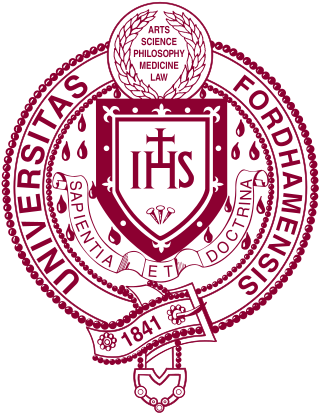
Fordham University is a private Jesuit research university in New York City. Established in 1841 and named after the Fordham neighborhood of the Bronx in which its original campus is located, Fordham is the oldest Catholic and Jesuit university in the northeastern United States and the third-oldest university in New York State.

John La Farge was an American artist whose career spanned illustration, murals, interior design, painting, and popular books on his Asian travels and other art-related topics. La Farge made stained glass windows, mainly for churches on the American east coast, beginning with a large commission for Henry Hobson Richardson's Trinity Church in Boston in 1878, and continuing for thirty years. La Farge designed stained glass as an artist, as a specialist in color, and as a technical innovator, holding a patent granted in 1880 for superimposing panes of glass. That patent would be key in his dispute with contemporary and rival Louis Comfort Tiffany.
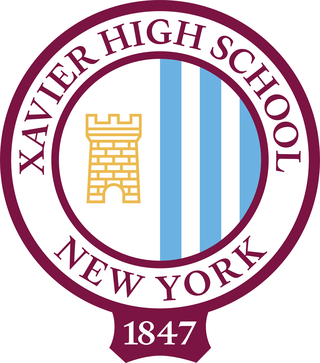
Xavier High School is an American independent university-preparatory high school for boys run by the USA Northeast Province of the Society of Jesus, in the Chelsea neighborhood of the Manhattan borough of New York City, New York.

Patrick Francis Healy was an American Catholic priest and Jesuit who was an influential president of Georgetown University, becoming known as its "second founder". The university's flagship building, Healy Hall, bears his name. Though he considered himself and was largely accepted as White, Healy was posthumously recognized as the first Black American to become a Jesuit, to earn a PhD, and to become the president of a predominantly White university.
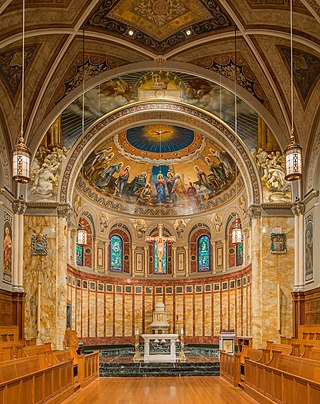
Saint John's Seminary, located in the Brighton neighborhood of Boston, Massachusetts, is a Catholic major seminary sponsored by the Roman Catholic Archdiocese of Boston.
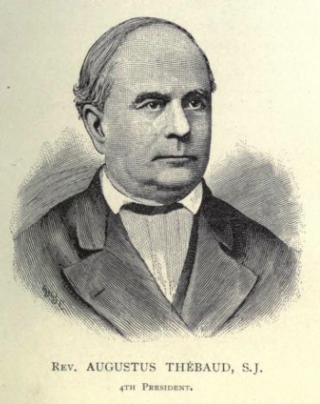
Augustus Thébaud was a French-American Jesuit educator and publicist.

Francis Patrick McFarland was an American Catholic bishop who served as the third Bishop of Hartford.

Edward Bernard Bunn was an American Catholic priest and Jesuit who became the president of Loyola College in Maryland and later of Georgetown University. Born in Baltimore, Maryland, he was educated at Loyola College before entering the Society of Jesus in 1919. He continued his education at St. Andrew-on-Hudson Woodstock College, and the Pontifical Gregorian University and then taught at Brooklyn Preparatory School and Canisius College.

Joseph Raymond Nonnatus Maxwell, SJ was an American Catholic priest, academic, poet, and college administrator. A Jesuit since 1919, he served as President of the College of the Holy Cross from 1939 to 1945, and President of Boston College from 1951 to 1958.

John Larkin (1801–1858) was a Jesuit priest, born in England, who settled in New York City. There he founded the College of St. Francis Xavier and became president of St John's College.
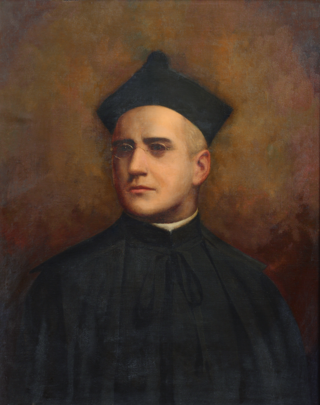
Joseph Shea (1829–1881) was a Jesuit priest and president of St. John's College from 1868 to 1874.

Patrick F. Dealy was a Jesuit priest and the eleventh president of St. John's College from 1882 to 1885.

Thomas J. Campbell was the twelfth and fourteenth president of St. John's College.
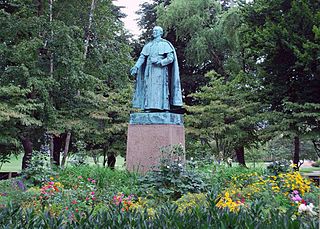
The history of Fordham University spans over 175 years, from the university's beginnings as St. John's College in 1841, to its establishment as Fordham University, and to its clerical independence in the mid-twentieth century. Fordham is the oldest Roman Catholic institution of higher education in the northeastern United States, and the third-oldest university in the state of New York, after New York University and Columbia University.

Bernard A. Maguire was an Irish-American Catholic priest and Jesuit who served twice as the president of Georgetown University. Born in Ireland, he emigrated to the United States at the age of six, and his family settled in Maryland. Maguire attended Saint John's College in Frederick, Maryland, and then entered the Society of Jesus in 1837. He continued his studies at Georgetown University, where he also taught and was prefect, until his ordination to the priesthood in 1851.
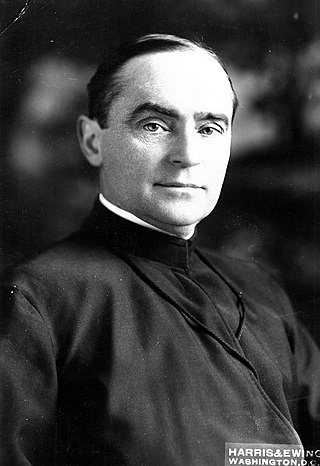
Alphonsus J. Donlon was an American Catholic priest and Jesuit who spent his career in priestly ministry and academia, including as president of Georgetown University from 1912 to 1918. Born in Albany, New York, he garnered a reputation as a good student and an exceptional collegiate athlete. As a professor, he went on to lead Georgetown University's sports program, which enjoyed great success. As a result, he became known as the "father of Georgetown athletics."
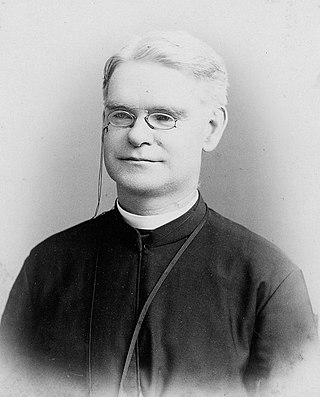
James Aloysius Doonan was an American Catholic priest and Jesuit, who was the president of Georgetown University from 1882 to 1888. During that time he oversaw the naming of Gaston Hall and the construction of a new building for the School of Medicine. Doonan also acquired two historic cannons that were placed in front of Healy Hall. His presidency was financially successful, with a reduction in the university's burdensome debt that had accrued during the construction of Healy Hall.

John Dunning Whitney was an American Catholic priest and Jesuit who became the president of Georgetown University in 1898. Born in Massachusetts, he joined the United States Navy at the age of sixteen, where he was introduced to Catholicism by way of a book that accidentally came into his possession and prompted him to become a Catholic. He entered the Society of Jesus and spent the next twenty-five years studying and teaching mathematics at Jesuit institutions around the world, including in Canada, England, Ireland, and around the United States in New York, Maryland, Boston, and Louisiana. He became the vice president of Spring Hill College in Alabama before being appointed the president of Georgetown University.

John Berchmans Creeden was an American Catholic priest and Jesuit, who served in many senior positions at Jesuit universities in the United States. Born in Massachusetts, he attended Boston College, and studied for the priesthood in Maryland and Austria. He taught at Fordham University and then at Georgetown University, where he became the dean of Georgetown College in 1909, and simultaneously served as the principal of Georgetown Preparatory School.



















